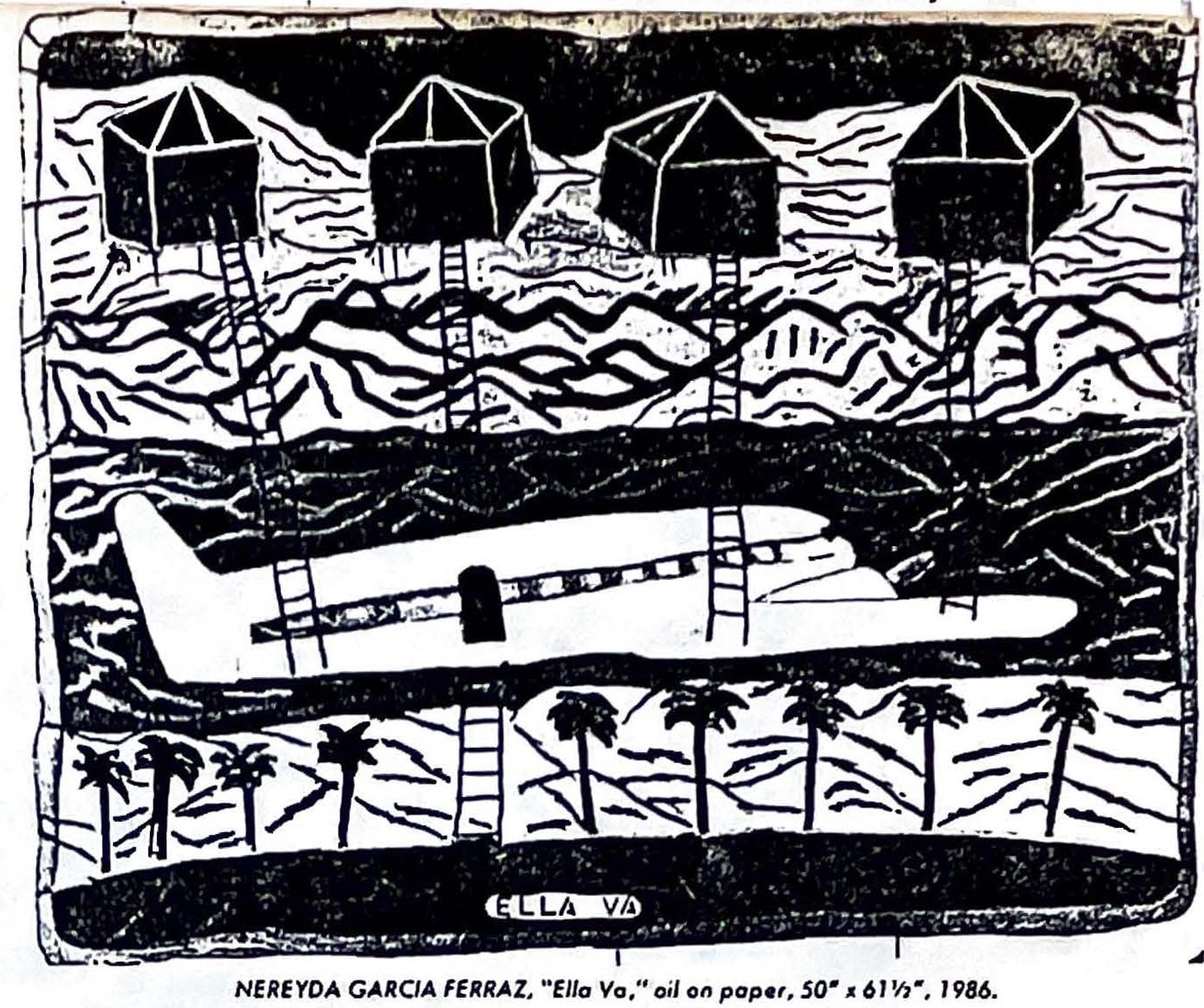Latina Art: Showcase '87
Mexican Fine, Arts Center by Deven Golden
American artists as diverse as Bingham, Hopper, Rivera, Currier & Ives, and the Farm Security Administration photographers focused on humanity and relationship to the American promise of a different, hopefully better life in the New World. This dialogue has had many names and many appearances but in general it has always fit under the greater heading of humanism. A powerful theme, it can touch the very cord of how we perceive ourselves as individuals, questioning the authority of groups, analyzing the texture of the society, drawing lines around our concepts of family, government and religion. It is a theme they underlie much of what we consider American art. It is therefore not surprising that the artists represented in Latina Art: Showcase 87”, whose collective social identity resides in the double limbo of ethnicity and femaleness, should be involved in this complex discussion, It was the range and depths with which the art works presented dealt with these concerns that was especially impressive and provocative.
Curated by Juana Guzman, this exhibition of 68 pieces by 22 Hispanic women artists from across the United States presented many outstanding works. At the same time, it quietly (so as not to interfere with the art itself illuminated some of the obstacles these artists face, referred to in the accompanying catalogue as “the one-two punch…of ethnicity and gender.” The clash between traditional women’s roles and the demands of an artist’s career informed more than a few of the works displayed, yet most of the pieces transcended the exclusively personal to make larger statements about the individual and society.
Photographer and painter Nereyda García Ferraz’s Ella Va (“She Goes”) was probably the best example of the simultaneously strong and questioning nature of most of the work exhibited. Rendered in García Ferraz’s childlike direct style, it depicts an airplane with four ladders leading
to four different homes, with none revealing itself as the correct choice. The painting has that ability to encompass all the paths, all the possibilities. It seems to ask, however. “Can we pull together our past and present to choose a clear path to the future?” This is not just a pertinent question for women artists, but for American society at large.
A group exhibition of this size doesn’t, permit an in-depth critique of all the works still, certain pieces deserve mention. These would include Sivia Malagrino’s subtle and dark lithographs of those suffering at the low end of the labor force; When Death Calls and is Rejected, one of the soft lead and oil reliefs by Marta Sanchez; Martha Chavez lyrically abstracted self-portraits; the mixed-media pieces of Santa Barraza and Martina Gutierrez that deal with the complexity of one life, and the elusive strength of faith respectively; the incisive craftmanship displayed in the works of Bibiana Suarez and Barbara Carrasco; and the wit of Ester Hernandez pieces of social commentary. These artists are all working not only to define their place in our future, but to ensure that the humanistic value long held important by American artists continue to survive
